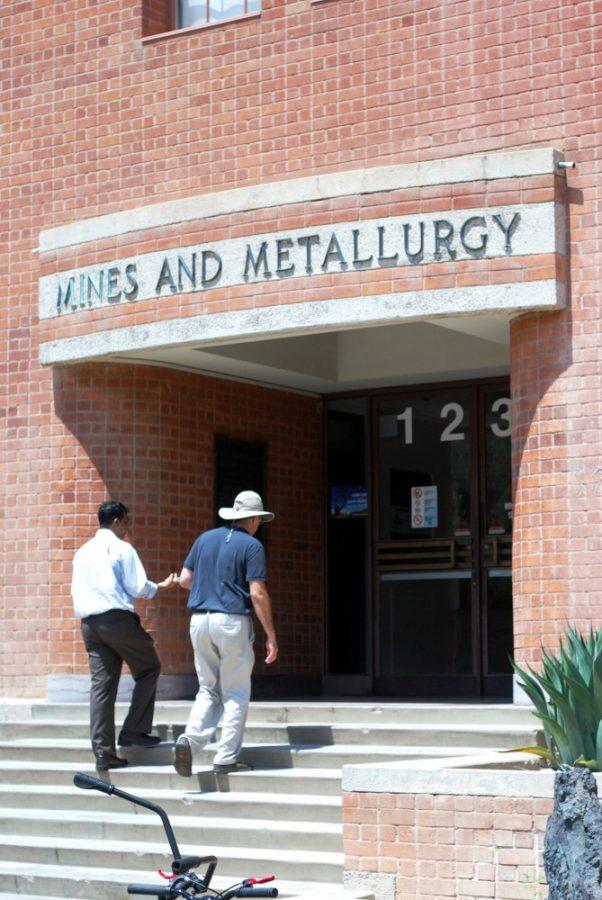An ordinary investigation of a mine led to the sudden contamination of a river popular for rafting, turning it yellow and toxic and necessitating a nine-day closure.
On Aug. 5, the Gold King Mine outside of Silverton, Co., spilled over 3 million gallons of contaminated water into the Animas River. The water was contaminated with high levels of lead, arsenic and mercury along with substantial amounts of other heavy metals, making the spill toxic.
Gold King Mine has been inactive since 1923, leaving the mine in the hands of the Environmental Protection Agency. The EPA received much of the blame for the spill, but the fault might not be entirely on the agency.
“It’s not just the responsibility of the EPA,” said Karl Flessa, a UA professor of geoscience. “They should have contained it, but there needs to be a program to clean up existing mine waste.”
The EPA was responsible for the physical spill, as the agency’s equipment disrupted material near the dam, causing it to fail. However, preventative measures could have been taken by the companies who have long-since abandoned these mines. Left inactive for years, these legacy mines are cause for concern.
Before the Clean Water Act and the Surface Mining Control and Reclamation Act were passed in the 1970s,there were few regulations requiring mining companies to mine responsibly. This allowed for a substantial amount of potentially dangerous mines, which pose serious risks to the environment today.
When mines are left unattended, water naturally accumulates, leaving the metals inside the mine to bleed into it. This creates a solution of high acidity and high metal content. The water was routinely pumped out when the mine was operational, but since it has been left abandoned, water has accumulated over time. Due to the great cost of pumping water from these legacy mines, the EPA has made no substantial effort to remove it.
In order to successfully maintain these mines, there are procedures that need to be maintained to ensure environmental safety and economic viability in the future.
“The dam needs to be a well-engineered structure, not just a debris pile,” said Gail Heath, research professor for the Lowell Institute for Mineral Resources. “You need to monitor that water so you know where it is in the subsurface all the time.”
Heath also stated that keeping water safely inside mines allows for good bacteria to grow and for the metals inside to form new ores over time.
“You need to have an engineered wetlands at the end of the opening [of the mine]so you can control water that the bacteria have already treated for you,” Heath said. “The bacteria will actually get most of that material up to EPA discharge standards without you doing anything, [and] engineered wetlands will actually take out the rest of the material that the bacteria did not.”
While mining companies are now being held accountable and have plans for closures well before they even open a mine, thousands of legacy mines are still open and potentially dangerous. The cost to clean up old mines is tremendous, and the task may be impossible. The EPA has been routinely bulldozing the entrances to abandoned mines that pose no major environmental threat in an effort close them, but the vast amount of mines left to close is daunting. According to the Bureau of Land Management there are over 6,000 of these mines in Arizona alone. According to an evaluation report from the EPA Office of Inspector General, the cost to clean up just 156 underground mining sites could potentially cost $24 billion. That’s only a small percentage of mines and nearly three times the EPA’s entire budget, which is under $8.2 billion. Even if the EPA began cleaning and maintaining old mines, it’s unclear who foots the bill.
“Should [mine remediation and maintenance] be paid for by all of the taxpayers of the U.S.? Should it be paid by existing mining companies?” Flessa said. While there have been some efforts by groups like the Property and Environment Research Center to have current mining companies to pay for clean-up, the cost is great, and no official mandate has been made.
“There’s work to be done in terms of legislation on cleaning up old mine waste,” said Flessa.
Follow Bailey Bellavance on Twitter.









